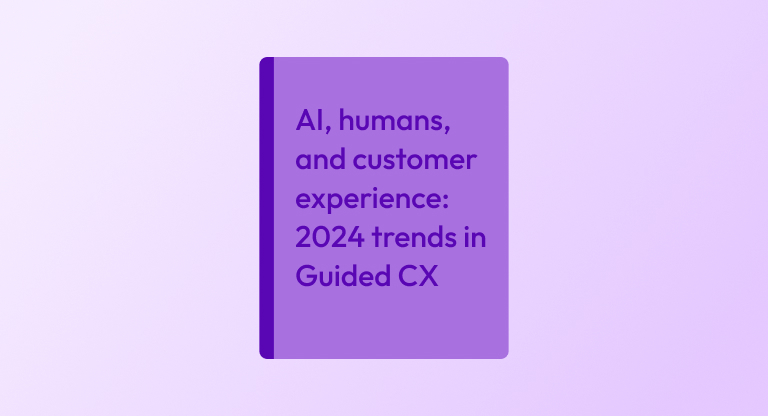A vital and often overlooked part of good CX is your agent’s experience (AX). If agents aren’t empowered, or worse, they’re micromanaged, it can result in a negative customer experience. While metrics are important, making sure your agents can act human is vital.
The bottom line: if you want to improve your customer experience, focus on your agent experience first.
Why the customer service agent experience (AX) matters
When your agents are happy, they provide better service. When they provide better service, the customer experience improves. When the CX improves, loyalty and referrals increase … which all leads to greater revenue. Plus, a high turnover rate and agent absences can negatively affect other KPIs, only adding to the importance of agent empowerment.
Here are some stats that reveal how the agent experience can have a ripple effect on your business:
- Glassdoor found that for every 1% increase in a company’s Glassdoor rating, the company also saw a 1.3% improvement in their customer satisfaction (CSAT) scores.
- Highly-engaged teams show 21% higher profitability.
- Engaged and satisfied agents are over three times as likely as their dissatisfied colleagues to feel empowered to solve customer issues.
Agents likely have more customer interactions than anyone else. So while improving the customer service agent experience (AX) may seem like a human resources issue, it’s very much tied to CX and overall business goals.
How to assess the customer service agent experience
Improving the customer service agent experience can improve all your other metrics. But unfortunately, about 70% of contact centers aren’t monitoring it. You can’t improve what you’re not measuring, so it’s important to gather some data.
This can be done using employee satisfaction (ESAT) surveys, usually annually or semi-annually, as well as regular check-ins, team huddles, and one-on-ones. These consistent temperature checks can help you gauge your agent satisfaction. Then — here’s the kicker — you must use this information to make changes.
To make changes, you need to have buy-in from the top. The organization must be open to receiving feedback and adapting or evolving based on what they learn. Businesses that have open door policies and a supportive culture make employees feel empowered to have their voice heard.
What affects the customer service agent experience?
We’ve discussed why the customer service agent experience matters, and how to monitor it. Now let’s get into the action — what to do to improve it.
Listening to your customer service agents’ feedback can help guide your specific actions, but it’s helpful to have a baseline understanding of what contributes to the agent experience (AX). Here are a few factors to consider prioritizing.
Technology and resources available
When agents have the knowledge, technology, and resources they need to succeed, they’ll have a better experience. Pieced-together, antiquated systems can cause frustration and slow processes down. With omnichannel tools, unified communication, and intelligent customer data on hand, your agents can reduce burdensome repetitive tasks that lead to burnout.
Supportive work environment
Over half of agents say that a supportive work environment is the most important thing they need to do their job well. Having performance goals is important, but it’s also important to remember that agents are people. Prioritize your agents’ needs and well-being to show them they’re valued members of the team.
Autonomy/ability to be authentic
Again, agents are people, not machines. Over-prescribing inauthentic scripts and failing to give agents freedom to be themselves isn’t just bad for the agent experience, it’s bad for the customer, too. Customers are savvy, and can see right through scripted expressions of sympathy.
Training and coaching
Training, coaching, and a clear career ladder can boost employee morale and improve retention. Promotional opportunities alone account for 14% of call center employees’ job satisfaction.
Better communication
Agents need effective communication tools for both external communications (with customers) and internal communications (with team members). When they require support, they need it fast — 57% of agents who can reach their supervisor within a couple of minutes report higher levels of employee satisfaction.
The importance of allowing agents to be human
Customer service agents aren’t robots. And they shouldn’t act like them. (We have chatbots for that now.)
More than ever, customers (and employees) crave human connection. When a customer contacts your company for support with a complex issue, they want to talk to a person; a person who responds with their own words and is empowered to take real action.
Sometimes it can be challenging to facilitate that connection over a text-only chat. (We shared more about these pitfalls and how to solve them in this blog post.) But even through text, customers can tell a distinct difference between talking to a chatbot, a person with a script, and a human speaking for themselves.
Newsflash: they want the real human who speaks for themselves. Which works out great, because that’s what employees want, too.
But isn’t sending a customer service agent to the field without scripts like sending them to the wild, wild, west? Not if you do it right. If you’ve hired the right people and given them appropriate training, you should trust them to do their job well.
Listen, scripts aren’t all bad, and they can save a lot of time. But if your agents are having entire conversations without using their own voice or making their own decisions, their experience and the customer’s experience will suffer.
Download your free ebook to learn how to empower your agents
Different modes of customer support can empower your agents to quickly and impressively solve customer problems. Get the ebook — Do I Need Visual Engagement Software? — to discover how using these powerful communication tools can set you apart.





